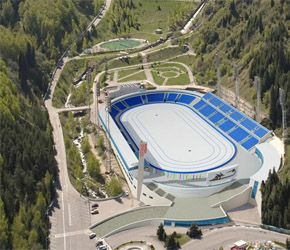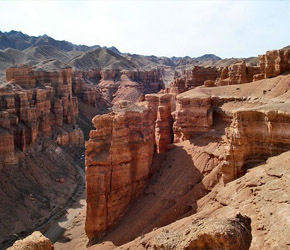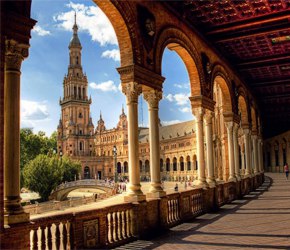The topic is very useful in various branches of engineering. If you are pursuing civil and mechanical engineering, it is inevitable for you to be a master in this subject. This topic has wide applications in construction and building activities. Also if you are someone who is planning to make a career in architecture then also this topic will be very helpful in designing.
Perpendicular Lines
The two types of planes are parallel planes and intersecting planes. Two non-intersecting planes are called parallel planes, and planes that intersect along a line are called Intersecting planes. In geometry, a plane is a flat surface that extends into infinity.
Defining Union and Intersection of Sets
- For example in the cuboid given below, all six faces of cuboid, those are, AEFB, BFGC, CGHD, DHEA, EHGF, and ADCB are planes.
- StudySmarter’s content is not only expert-verified but also regularly updated to ensure accuracy and relevance.
- Some of the key properties of a plane are that it is a flat, two-dimensional surface that extends indefinitely.
It is unique as it focuses entirely on these flat shapes and their properties, instead of three-dimensional shapes, which fall under the umbrella of solid geometry. In our everyday life, we often interact with these plane shapes without realizing it. For instance, when drawing a diagram or a map, we are effectively using the principles of plane geometry. As already mentioned, plane Geometry deals with flat shapes that can also be drawn on a piece of paper. These plane geometric figures include triangles, squares, lines, and circles of two dimensions. That being said, plane geometry is also referred to as two-dimensional geometry.
The points of PG(n, K) can be taken to be the nonzero vectors in the (n + 1)-dimensional vector space over K, where we identify two vectors which differ by a scalar factor. These sets can be used to define a plane dual structure. Length and width of a curved shape, like a circle, are a bit more complex than these properties when we are dealing with straight lines. Finding the length, width, and area of curved shapes requires that we know different equations. For example, since a circle is a round shape with no corners, the length and width are the same and are actually called the diameter.
Plane Geometry
It is absolutely flat and infinitely large, which makes it hard to draw. In the figure above, the yellow area is meant to represent a plane. In the figure, it has edges, but actually, a plane goes on for ever in both directions. In three-dimensional space, a plane can be defined or visualized as a flat, infinite sheet floating in the air. This plane can move in any direction — up, down, side to side — but it always remains flat and extends forever. In mathematical terms, a plane can be defined by three non-collinear points (points not lying in a straight line) or two parallel lines.
At StudySmarter, we have created a learning platform that serves millions of students. Meet the people who work hard to deliver fact based content as well as making sure it is verified. Now we can use the given point to find the value of \(d\). Since we have been given the coordinates, we can substitute them into the equation to solve for \(d\).
Building planes in geometry
The diameter is the distance from any point on the circle across to the other side. The word «plane» can also refer to the imaginary flat surface upon which a figure or object appears to rest. For example, a cube can be said to lie in or on a plane.
- There are two approaches to the subject of duality, one through language (§ Principle of duality) and the other a more functional approach through special mappings.
- The construction of a correlation based on inversion in a circle given above can be generalized by using inversion in a conic section (in the extended real plane).
- Also if you are someone who is planning to make a career in architecture then also this topic will be very helpful in designing.
- This topic has wide applications in construction and building activities.
- At StudySmarter, we have created a learning platform that serves millions of students.
We also identify a plane by three noncollinear points, or points that do not lie on the same line. Think of a piece of paper, but one that has infinite length, infinite width, and a plane in geometry no thickness. Yes, the Plane extends forever in two dimensions but they have no thickness. A plane is a flat surface that contains infinitely many intersecting lines that extend forever in all directions. In geometrical parlance, a «plane» signifies a two-dimensional surface extending boundlessly in all directions, akin to a sheet of paper.
Dual configurations
We can see an example of a plane in coordinate geometry. The coordinates define the position of points in a plane. The theory of poles and polars of a conic in a projective plane can be developed without the use of coordinates and other metric concepts. A method that can be used to construct a polarity of the real projective plane has, as its starting point, a construction of a partial duality in the Euclidean plane. The plane dual statement of «Two points are on a unique line» is «Two lines meet at a unique point». Forming the plane dual of a statement is known as dualizing the statement.
What is a Plane Figure?
It is two-dimensional (2D), having length and width but no thickness. When two planes intersect, they create a line known as the intersection line. Depending on the angle formed by the intersecting planes, the intersection line can be horizontal, vertical, or slanted.
They can determine load-bearing capacities by analyzing the orientation and angles of planes. Engineers rely on planes to ensure structural stability, as they help calculate forces and stresses acting on different parts of a building. Additionally, planes measure slopes, levels, and alignments during construction projects. Their application allows for precise calculations and ensures that buildings are constructed safely and efficiently. Furthermore, planes play a vital role in navigation systems such as GPS.
Well, we know the coordinates of a point that lies on the plane, so if we substitute these values into the equation, it will give us \(d\). Remember, the coordinates of the point is in the form \((x,y,z)\). A line is straight, has no thickness, and goes on infinitely on both ends- so it has no ends! Just like the ray from the sun, it starts on one end going in one direction infinitely. For example, if you draw a dot on a piece of paper, that is a point. It has no dimension to it but simply represents the exact location it is positioned at.
However, on the other side of geometry is solid geometry which talks about three-dimensional objects in space. Objects like spheres, cubes, and cylinders exist in solid geometry because they have height, length, and width. Solids have properties like volume, surface area, and more. Not sure about the difference between all of these terms in geometry?




































